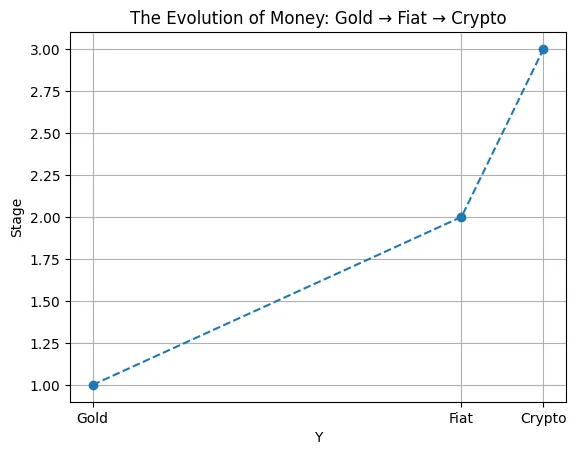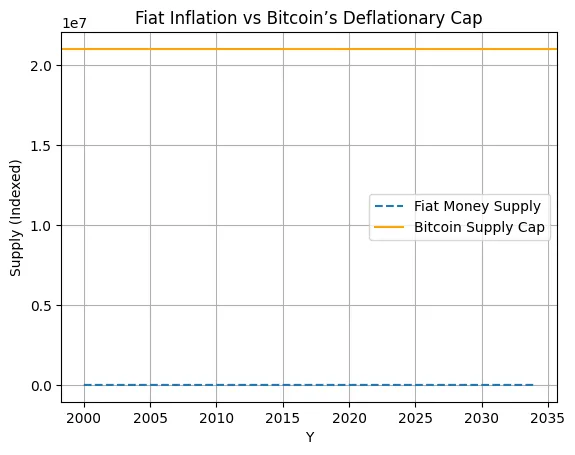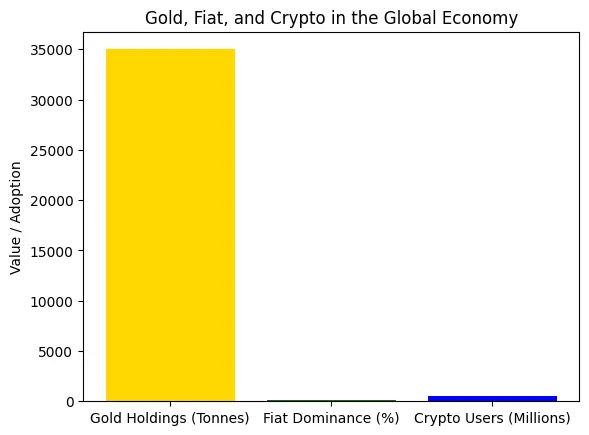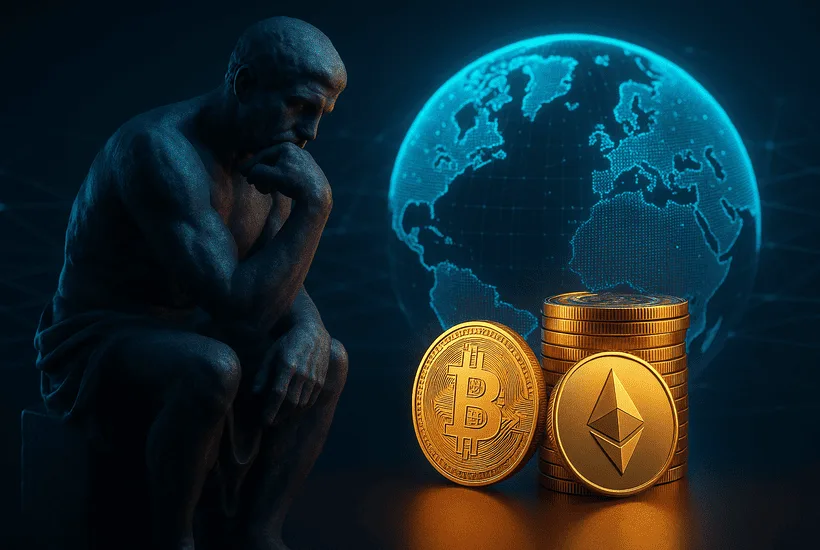-
Money encompasses more than just economics; it embodies psychology, culture, and shared belief.
-
Gold represents stability, fiat signifies power, while crypto embodies trust through code.
-
The era of cryptocurrency compels us to reconsider the true meaning of “value.”
Introduction
Money has never been merely about figures. At its essence, it is a narrative that communities opt to accept. Gold shone as the everlasting metal, fiat money ascended as the tool of governmental power, and now digital currencies are coming forth as the modern expression of trust in technology. Every type of currency reveals insights about our identities, influencing us economically, psychologically, and culturally. In the era of cryptocurrency, we are not merely exchanging tokens; we are redefining the very concept of value.
Money as trust — the psychological lens
Throughout time, trust has always been essential for money. Gold earned respect due to its rarity and imperviousness to corruption. Fiat currencies gain value not through physical scarcity, but from shared confidence in governments and central banks. When the U.S. abandoned the gold standard in 1971, the dollar did not fall apart; rather, trust transitioned from metal to government.
Crypto signifies a revolutionary transformation. Trust now resides not in leaders or organizations, but in mathematics, code, and collective agreement. Bitcoin’s halving events and Ethereum’s smart contracts demonstrate a psychological shift: individuals are ready to trust systems lacking central control. The psychological reassurance of gold and the institutional power of fiat face challenges from algorithmic confidence.
Newsletter
Get weekly updates on the newest crypto stories, case studies and tips right in your mailbox.

Money as power — the economic lens
Gold-centric systems once characterized empires. Those who held gold reserves influenced global authority. Fiat currencies, by enabling supply expansion, permitted contemporary nations to fund wars, social programs, and development. However, inflation continues to be their weak point as increasing the money supply reduces value.
Crypto brings forth programmable currency. Bitcoin’s limited supply of 21 million serves as a deflationary safeguard against the inflationary nature of fiat currencies. Ethereum, through its decentralized finance (DeFi) ecosystem, allows for economic experiments that cannot be conducted under fiat currency. In this context, currency transforms into software. This transition reallocates authority: from central banks to decentralized systems, from governments to algorithms. From an economic perspective, cryptocurrency contests the dominance of currency production.

Money as identity — the cultural lens
Money also reveals our identity. Gold represented more than just riches; it served as a cultural emblem of lasting significance, inherited through generations as ornaments or legacy. Fiat money, decorated with national emblems and figures, signifies governmental authority and national identity. The dollar evolved beyond mere currency to symbolize U.S. cultural supremacy.
In contrast, crypto has given rise to digital communities. Memecoins such as Dogecoin and Shiba Inu focus more on community than on financial aspects. Bitcoin supporters unite around the principle of “sound money,” whereas Ethereum developers create communities focused on open-source teamwork. This cultural perspective reveals that money is now linked not to countries or metals but to worldwide online communities. Crypto has transformed into more than just a financial tool; it has evolved into a cultural phenomenon.

Future outlook
The future will not erase gold or fiat. Instead, we are entering a hybrid age where all three coexist. Gold remains the eternal store of value, fiat the convenient instrument of state power, and crypto the global experiment in decentralized trust. But the deeper question remains: what does money mean when it is no longer physical or tied to governments, but merely code?
Crypto forces us to confront an ancient philosophical question: is money real, or is it only a shared story? The age of digital currencies suggests that money is whatever we agree it is and perhaps always has been.
Conclusion
Money mirrors humanity. Gold reflected our reverence for permanence, fiat our reliance on authority, and crypto our faith in code and networks. The philosophy of money in the age of crypto is not just about finance; it is about belief, identity, and the stories we tell ourselves. As digital currencies grow, we may discover that money’s ultimate power lies not in what it buys, but in what it makes us believe.













